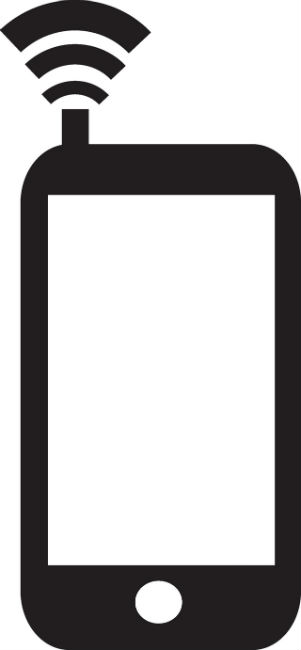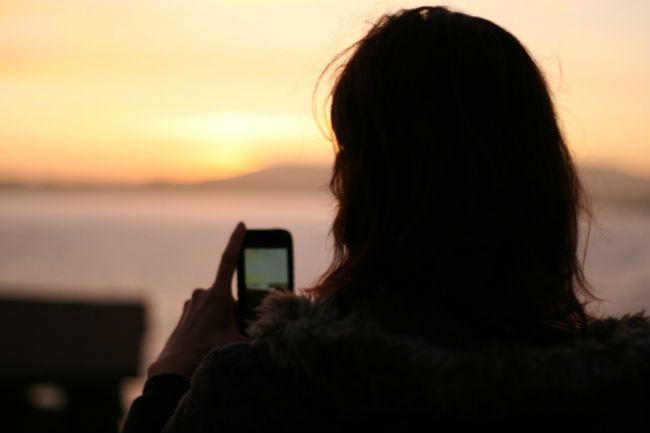Ultrasound mosquito repellants can keep insects away, emitting ultrasonic sound of various frequency. This high sound is not likely to be heard by elderly people, but audible to kids and babies. Newborns can hear ultrasonic frequency as well as tiny pests can do. Spiders, cockroaches, mosquitoes and ants avoid areas where ultrasound is generated. The use of ultrasonic sound fequency to repel mosquitoes and other insects has also been introduced into mobile telephones recently. In 2003, a South Korean company launched an app mosquito repellent that could be downloaded on a cell phone. The ultrasonic signal played in areas where the mosquitoes are very heavy. It was also mentioned that this ultrasound frequency was highly effective against biting insects within a radius of 40 inches.

App mosquito repellent for iPhones and smartphones
Nowadays, app mosquito repellent can be downloaded for Apple and Android phones. Both commercial and free anti-mosquitoes apps claim that they turn iPhones and smartphones into mobile repellents. Among them the most popular are Mosquito blocker free (by Lucas Lubbe), Anti-mosquito prank (by ExaMobile S.A.), Anti Mosquitoes (by Digitaran), Mosquito repellent ultra (by Krunal Prajapati) and many others. No need to purchase and apply sprays and creams on exposed skin, a portable cell phone with ultrasound app mosquito repellent is always at hand.
How does ultrasound app repel mosquitoes?
The anti-mosquito applications emit high frequency sound imperceptible to the human ear but which is disliked by blood-sucking female mosquitoes. All you need is to choose the frequency and activate the radar.
The principle of keeping mosquitoes away using the sound frequency is not new. Before mobile phone ultrasound apps, the sound was generated from battery-powered or plug-in electronic repellants. They are still commercially available nowadays.
How does the ultrasound keep off mosquitoes? The developers of mosquito repellent apps claim that these pesky insects are frighten off by the high frequency sound due to several reasons. First, it resembles the frequency of the dragonfly’s wing beat. Second, the ultrasound is similar to the noise of bat wings and to the sound that bats emit. Both dragonflies and bats are natural predators of biting insects. Therefore, it is presumed that the mosquitoes shrink from meeting them and fly away when hear the sound of their wings beat. Third, the ultrasonic signal replicates the male mosquitoes. Females, who are in search of a host to suck some blood, have already mated and will, therefore, tend to avoid encounters with their mates.
App mosquito repellent: does it really work?
William Kremer in his article “Ultrasound mosquito repellents: Zapping the myth” (BBC World Service, 2012) described the experiment of Mr. Knols with ultrasound. Knols has filmed himself using an iPhone app to emit an ultrasound signal at 15kHz. In the video, he put his gloved hand with the phone into a cage of Dengue-virus-carrying mosquitoes. In the result, the biting insects landed on his hand, visibly undeterred by the ultrasound signal.
The app which Knols used in the demonstration does not advertise itself as an app mosquito repellent. However, the app developers claim that their companies have experimented with various ultrasound frequencies in creating the technology.
The misconception that mosquitoes flee from the ultrasound has been around for 40 years. The first scientific review of an electronic repellent was published in 1974. It stated that mated female mosquitoes avoided ultrasound as it simulated the noise of male mosquitoes.
However, Knols points out that this explanation fails by its own logic because male mosquitoes only produce a sound of 700 Hz, far lower than an ultrasound frequency. In fact, the female mosquitoes don’t have ears and can’t hear. Moreover, it is assumed that they have a weak sensitivity to sound in general. [ref]William Kremer. Ultrasound mosquito repellents: Zapping the myth. BBC World Service, 11 December 2012[/ref]
15 tests with ultrasound against mosquitoes failed
Nobody really knows how ultrasound, electronic or app mosquito repellent works. The problem is that in 15 completely different experiments conducted by various researchers, they consistently don’t. It is curious that in 12 of them, the mosquito landing rate equaled or was greater when the scientists turned on the ultrasonic signal.

To use app mosquito repellent or not is only for you to decide. It is clear that you shouldn’t apply ultrasound repellants alone and in areas where mosquito-borne illnesses circulate. Apps against mosquitoes require supplement protective measures such as using body sprays, nettings, permethrin-treated clothing, anti-mosquito bracelets and patches.
This has obviously worked for someone, or they wouldnt keep trying to do it and it is a good idea in theory, but like so many other things the practice is mishandled
there are over 3000 species and 150 of them in the US,,,,,,,,,, the so called useful active Frequencies offered as an explanation only cover a Broad General Range….. 20-250 kHz ? come on
with so much at stake, and with lethally transmitted disease, encroaching further at every breath, walking on pins and needles
wouldnt it solve alot of controversy to test this at a University ? or does this mean that all the students with free rides have something better to do ?
currently underway is a program that is able to detect and beginning to identify these Mosquitoes by their Buzzing Noise, GPS and Time Stamp sent to a Lab with an App hooked to the microphone………….. if they can identify by the buzzing, they can certainly spend as much effort testing them with ultrasound. If they can recognize them by their Buzz, they can sure make a repellent using the same features
if all these Cellphones are loaded with such successful 007 Secret Decoder Spygear anyway , and not being use for anything else
I dont know that the DEET is all that much better, I dont want that shpit all over my clothes, car and house. And while we are at it, the Cellphones are getting pretty Toxic themselves and need a little radiation ultrasound reality check too while were at it
lets Zombie Laser Blast the Bugs with it